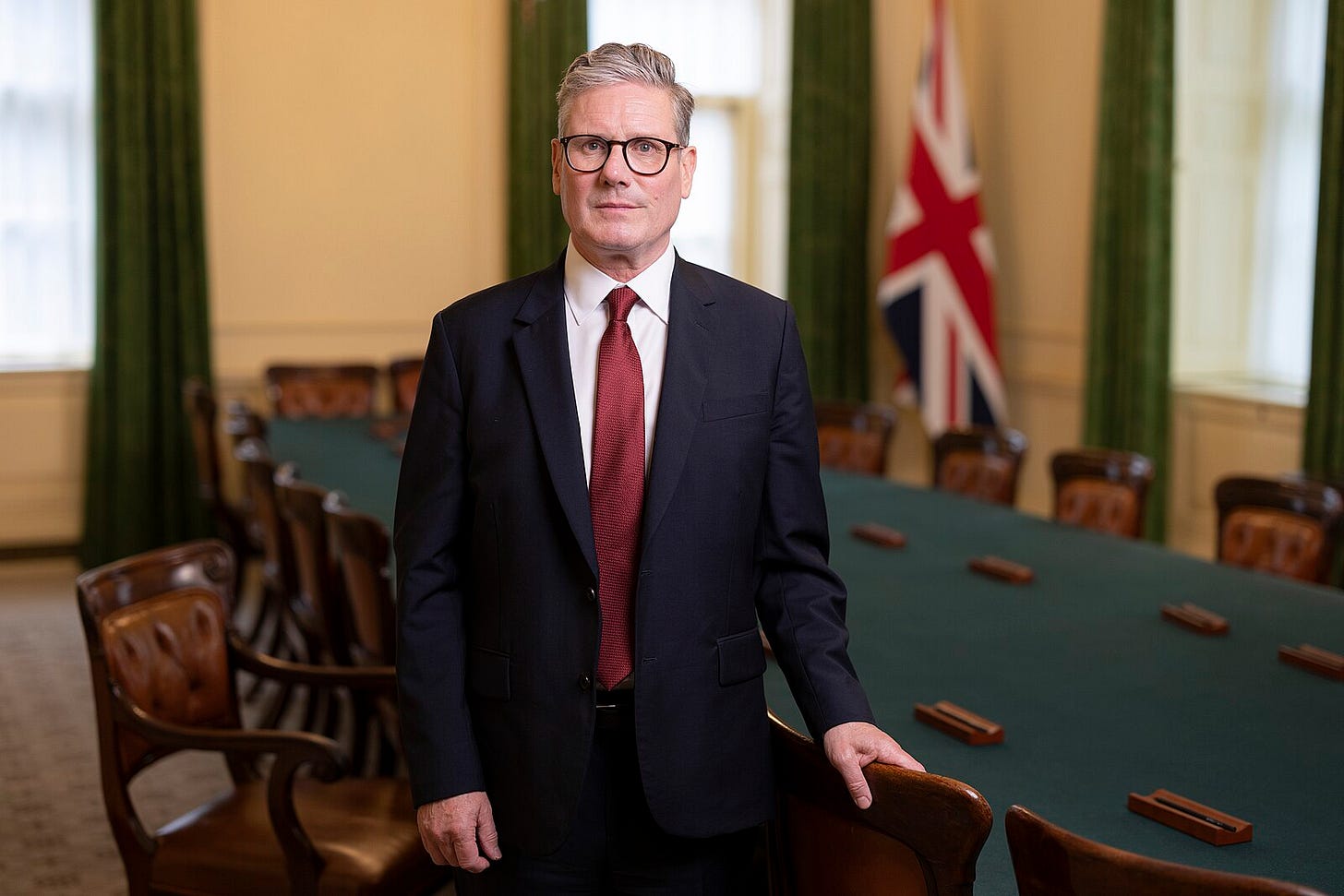Starmer Walks a Fine Line Between Trump and Europe
A cultural analysis of collaboration and stability meeting individualism and power politics.
Cultural differences shape how Starmer and Trump handle the Ukraine crisis, including how the leaders communicate, whose interests they serve, and what makes them credible.
What’s Happening
Keep cool heads is Starmer's message to the UK government
Hopes to be a 'bridge' between Europe and the U.S.
Balancing act may get harder
British Prime Minister Keir Starmer is trying to act as a bridge between the US, Europe, and Ukraine. He urges leaders to stay calm and coordinated and aims to unite European nations while persuading Trump to support Ukraine. He has built ties with French President Emmanuel Macron and, surprisingly, with Trump, who reportedly likes Starmer’s direct but reserved style.
Starmer is working on a peace plan that he hopes will appeal to Trump and other world leaders. But there are obstacles—some European countries are hesitant to send troops, and Trump’s erratic policies make US support uncertain. Meanwhile, Starmer advises Ukrainian President Volodymyr Zelenskiy on negotiating with Trump, hoping to keep the US involved in the war effort.
Should diplomacy rely on quiet negotiations and cooperation or bold, direct demands from one party? It all depends on your Cultural Perspective.
Why It Matters
This situation reveals major cultural differences in how leaders communicate, whose interests they prioritize, and what gives them credibility.
Starmer uses indirect communication, relying on careful messaging and behind-the-scenes coordination. Trump has difficulty understanding this and uses explicit speech —blunt, public, and focused on immediate results.
It also reflects a collectivist vs. individualist divide. Starmer works to keep allies unified.
Trump focuses on what benefits his political agenda the most. Finally, leadership credibility plays a role. Starmer’s influence comes from his negotiation skills. Trump’s power is tied to his status and ability to attract attention.
What It Means
Communication Style - Subtle Diplomacy vs. Direct Negotiation
Starmer relies on private discussions, careful wording, and long-term relationship-building. His strategy—coaching Zelenskiy on how to engage Trump. This shows his preference for influencing events behind the scenes rather than making demands publicly.
Trump takes a public and direct approach, making blunt statements publicly and expecting quick results. His direct challenge to Zelenskiy and deal-making approach to NATO reflects his need for decisive, high-profile, short-term, and politically motivated actions rather than long-term, long-lasting negotiations.
Trump’s actions cause rapid policy changes, disrupting global trade and stability and increasing prices across the board. Diplomacy and long-term relationship-building slow decision-making but maintain security, stability, and economic prosperity.
National Priorities - Collective Security vs. National Power
Starmer sees security as a shared responsibility. He works with France, Germany, and Ukraine to strengthen Europe, aiming to keep allies together and ensure a coordinated response to Russia’s aggression.
Trump takes an individualist approach, prioritizing immediate U.S. interests over long-lasting alliances and prosperity. His decision to pause military aid and push for a fast peace deal—even if it does not align with Ukraine’s needs—shows a willingness to shift commitments based on what benefits his political agenda the most.
This divide affects the economic stability of the US. A collectivist strategy keeps alliances strong, which keeps countries and markets secure, stable, and predictable - the formula for lower prices. An individualist strategy leads to conflicts causing market instability, higher spending, and rising costs for goods.
Leadership Credibility - Earned Influence vs. Power by Status
Starmer’s influence comes from his ability to negotiate and build trust among world leaders. His credibility is based on consistency, careful diplomacy, strategic decision-making, and working with allies.
Trump’s leadership is built on status and personal power. His influence comes from his ability to dictate terms, destabilize situations, and shift policies without notice. Unlike Starmer, he does not rely on consensus-building—his authority comes from his position and ability to command attention.
This difference shapes how global leaders respond to the U.S. Leadership based on skill and diplomacy makes the US trustworthy and its policies predictable. This strengthens businesses, trade agreements, and long-term investments.
Leadership based on personal power makes the US fickle and less stable and brings about abrupt shifts that affect trust in the US, trade partnerships, and economic security.
What’s Next
Starmer’s success depends on whether European nations support his peace efforts and whether Trump can understand that cooperation benefits America. If the US moves further from Ukraine, Starmer may have to push Europe to take a larger role in security without American backing, weakening America as a world power.
The bigger question remains: Should diplomacy be built on careful alliances or bold power moves? Until this cultural divide is resolved, tensions between the US and its allies will continue, threatening global security, economic stability, and America’s international reputation.




